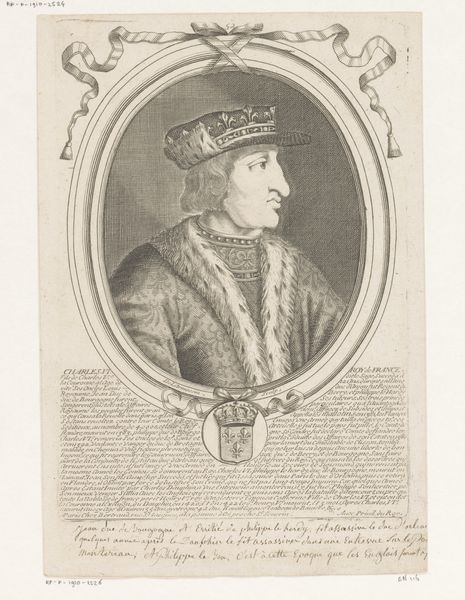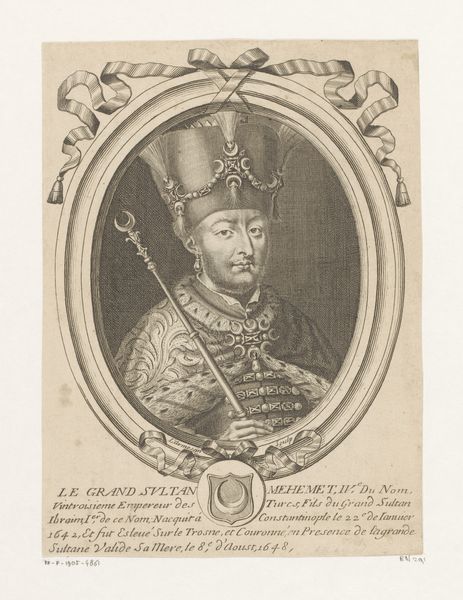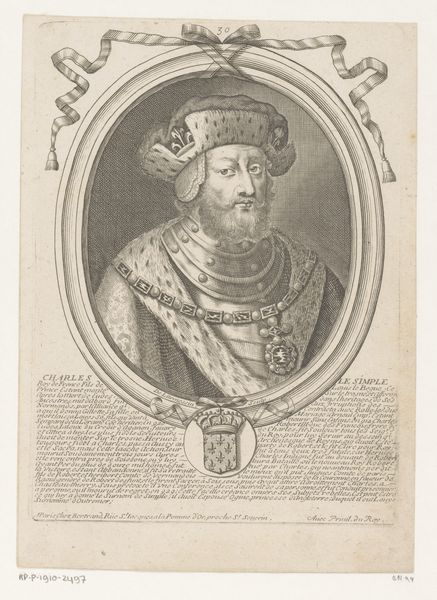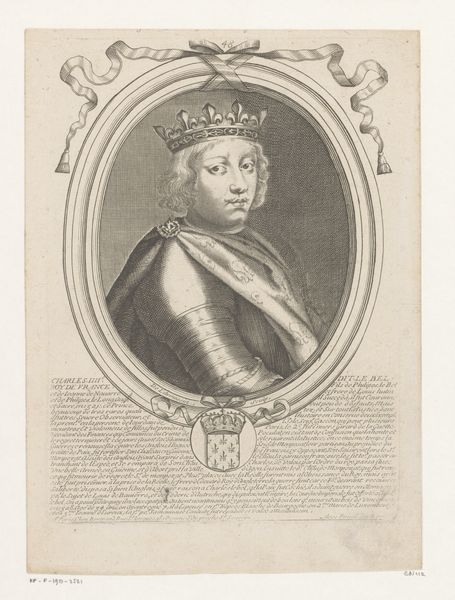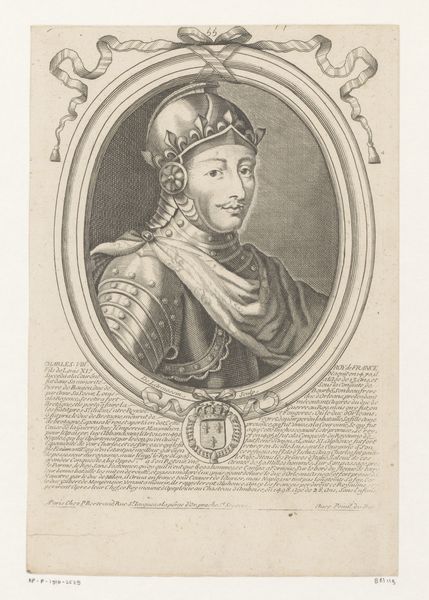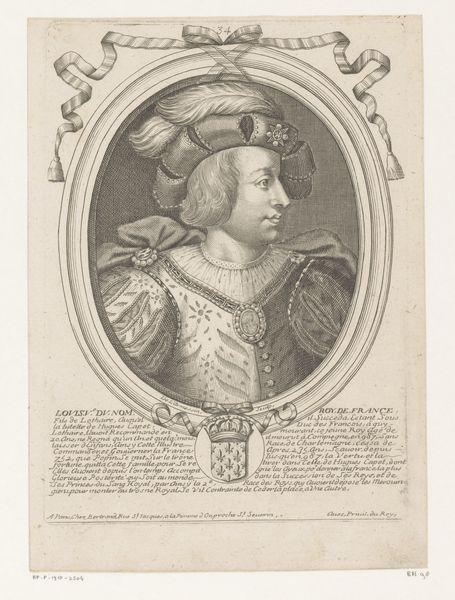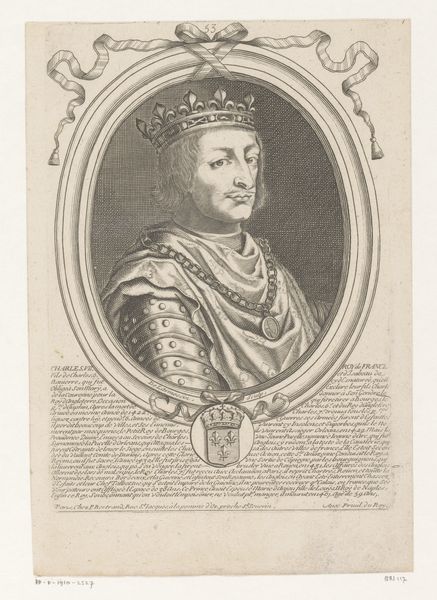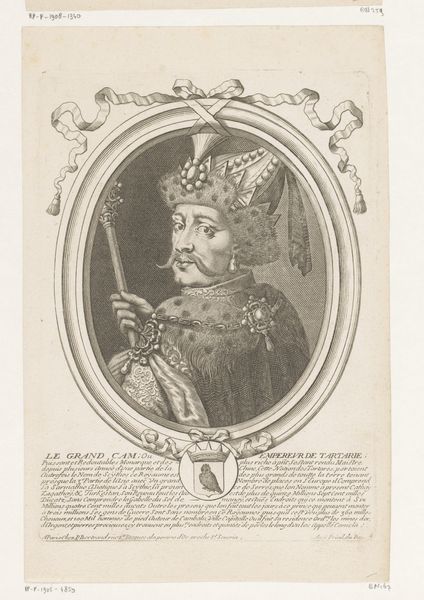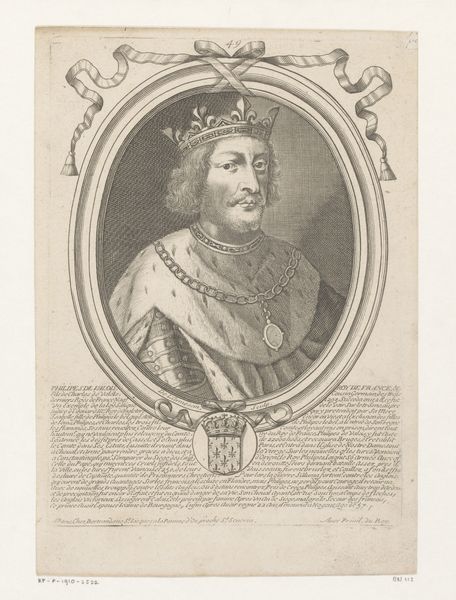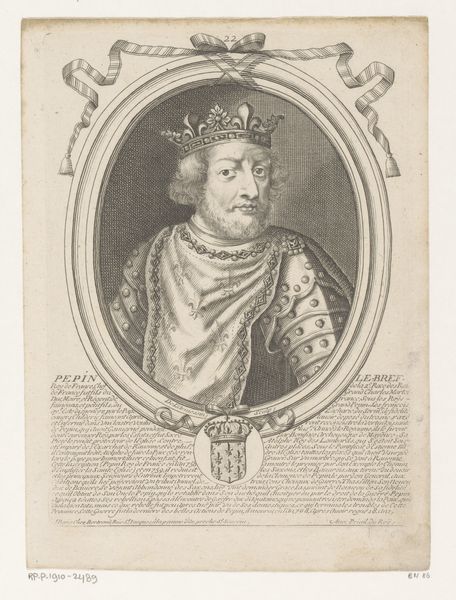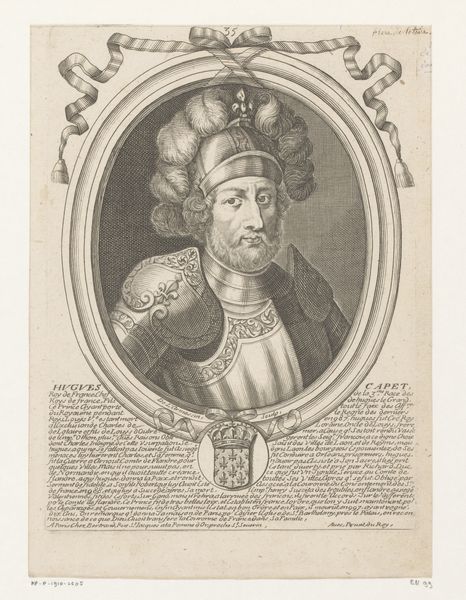
print, engraving
#
portrait
#
baroque
# print
#
old engraving style
#
history-painting
#
engraving
Dimensions: height 230 mm, width 163 mm
Copyright: Rijks Museum: Open Domain
Curator: We're now looking at a Baroque engraving dating from the period of 1642 to 1678, a print after Nicolas de Larmessin, entitled "Portrait of Jan (III) Sobieski." Editor: It strikes me as a carefully constructed image—very regal and dignified, of course, but also perhaps a little...distant? There's a certain coolness, despite all the finery. Curator: Well, portraits of rulers during this era were very much about establishing power and legitimacy through symbolism and visual rhetoric. Note his luxurious fur hat and elaborate garments—visual signs communicating prestige and authority. Editor: True. But how much of that is really about Jan Sobieski, and how much is about the performance of kingship? What aspects of the printing, with its textual framing devices, attempt to consolidate his role as a leader? Curator: The choice of engraving itself also has significance. Prints like this were often reproduced and distributed widely, helping to disseminate the image and influence perception. Think of it as early public relations, forging an ideal image of the King of Poland. The oval frame ornamented with ribbons presents a staged space for Polish sovereignty. Editor: So the symbolism wasn't just in what he wore, but in the very act of image-making. The inscriptions framing the portrait offer legitimacy and communicate what we might now consider propaganda. Were these widely available beyond court circles, or more likely seen in aristocratic homes? Curator: Probably both. Though expensive by modern standards, printed engravings were easier to reproduce than painted portraits, thus widening the sphere of influence, compared to a painting, only available to be viewed in one place. This assured visual messaging reinforced Sobieski's persona. Editor: So we have here not just a representation, but an active piece of statecraft. It reflects not just the person of Sobieski, but the very machinery of power that sought to define and solidify his reign. The material and scale of the print medium itself would amplify these visual associations. Curator: Indeed. The power of visual symbols extends far beyond aesthetics, doesn't it? It truly shapes perception and encodes lasting messages across generations. Editor: It shows that understanding any historical figure means understanding the careful visual narratives that surrounded them—narratives, it must be said, carefully engineered.
Comments
No comments
Be the first to comment and join the conversation on the ultimate creative platform.

